Two products recognized through inclusion in the JIDA Design Museum Selection Vol. 22.
Interviewing designers of analytical and medical devices about the design process
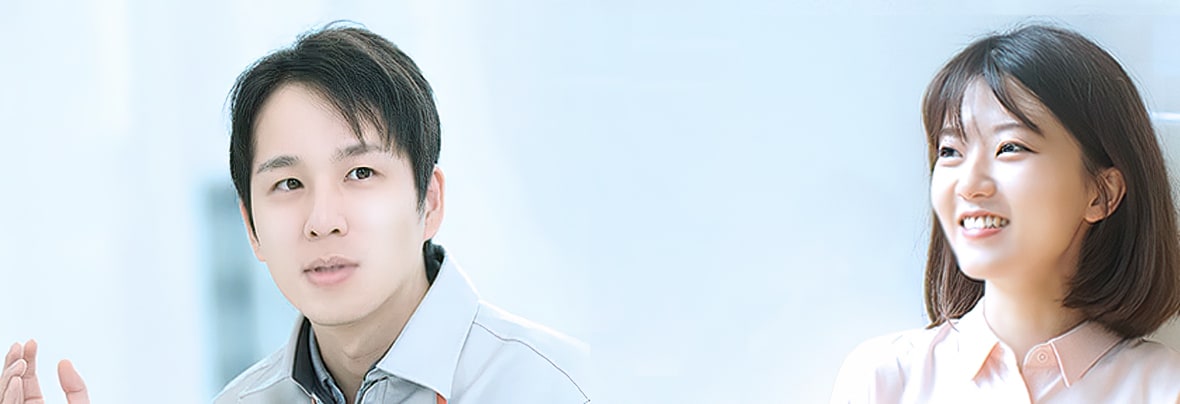
Shimadzu’s MobileDaRt Evolution MX8 Version, a digital mobile X-ray system, and Nexera series ultra-high performance liquid chromatograph have been recognized by being included in the JIDA Design Museum Selection Vol. 22.
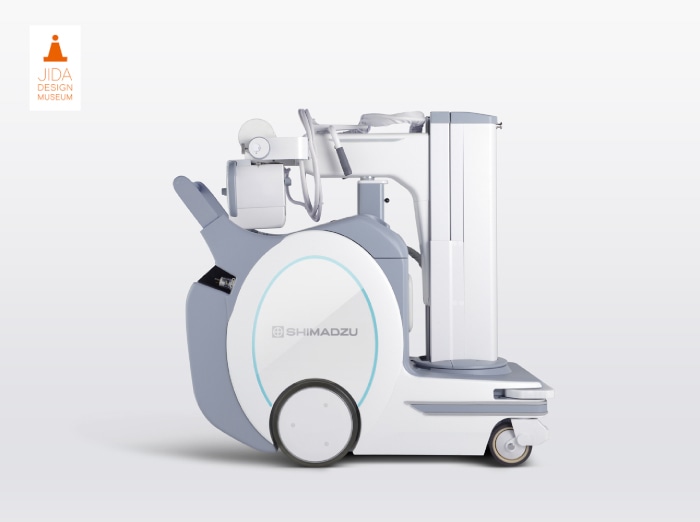
MobileDaRt Evolution MX8 Version
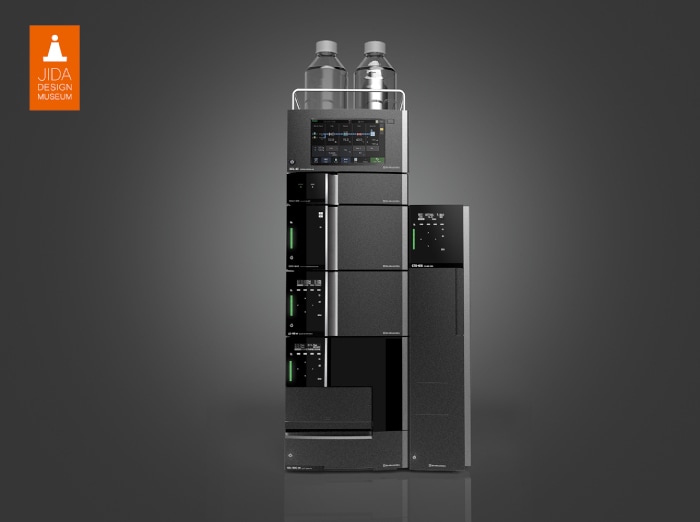
Nexera series
Tomoya Sugie and Hyeri Kang, designers of the award-winning products, who both work in the Product Design Unit, Corporate Product Design Center, were interviewed about the process of completing a design, their approaches to designing, their aspirations, and the enjoyment they derive from their accomplishments.
How did Shimadzu go about designing these analytical/measuring and medical diagnostic imaging devices?
- What is JIDA Design Museum Selection?
- Outline and awards history of MobileDaRt Evolution MX8 Version
- Outline and awards history of Nexera series
- Expressions of exhilaration by Shimadzu Corporation designers
- Design processes for award-winning products
- Designing of analytical/measuring and medical diagnostic imaging devices
- Aspirations for future design projects
What is JIDA Design Museum Selection?
JIDA Design Museum Selection is sponsored by the Japan Industrial Design Association (JIDA), a public interest incorporated association. “Aiming to create enriching and attractive lifestyles,” the Association selects and commends products featuring quality industrial design that makes living more amenable. By compiling and curating these inventions for the benefit of future generations, JIDA makes cultural contributions to education, industry, and everyday living.
For FY2020, Design Museum Selection Vol. 22 chose 54 products out of 220 recommended entries.
Some of the selected products were to be displayed at an exhibition of JIDA Design Museum Selection Vol. 22 in Tokyo; however, the exhibition was officially postponed due to the coronavirus pandemic.
Outline and awards history of MobileDaRt Evolution MX8 Version
MobileDaRt Evolution MX8 Version is a digital mobile X-ray diagnostic imaging system for use in emergency medical screening at ICU and ER as well as daily hospital rounds. It is being used to diagnose COVID-19 pneumonia at medical institutions over the world.
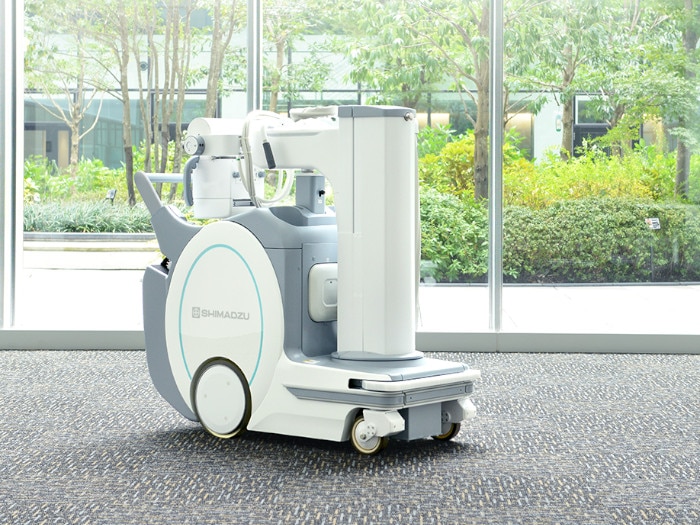
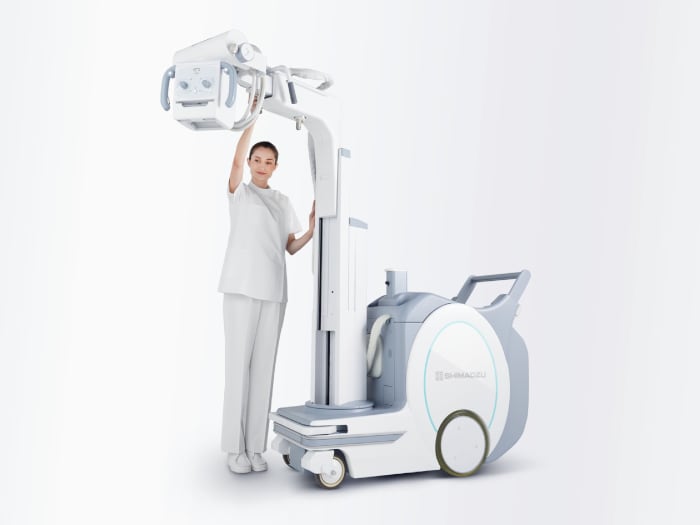
The system is characterized by the excellent maneuverability. The number of worldwide order booking of the MobileDaRt sereis has exceeded 5,000 units since it was introduced in 2005.
This product won the Good Design Award in 2018, and the Machine Design Award (Japan Electrical Manufacturers’ Association Award) in 2019.
Outline and awards history of Nexera series
Nexera series is an ultra-high-performance liquid chromatograph used to separate molecules in a liquid mobile phase and detect trace components of analytes. It is compatible with a wide range of analytical needs in pharmaceuticals, foods, chemistry, and environmental testing. Nexera systems use state-of-the-art technology to increase reliability in analysis and high throughput.
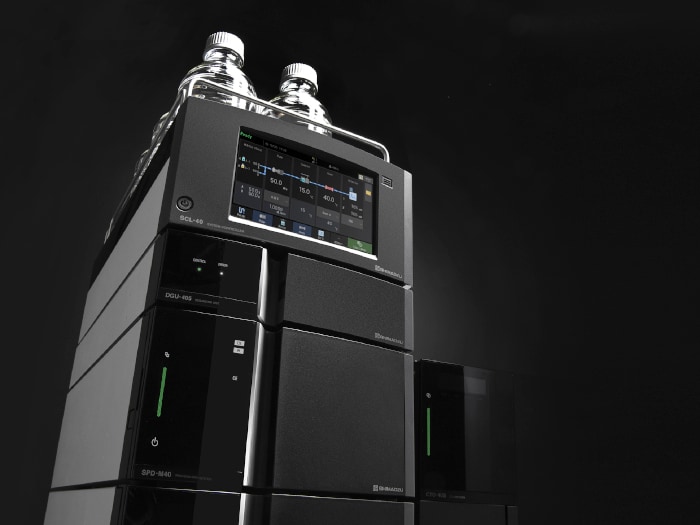
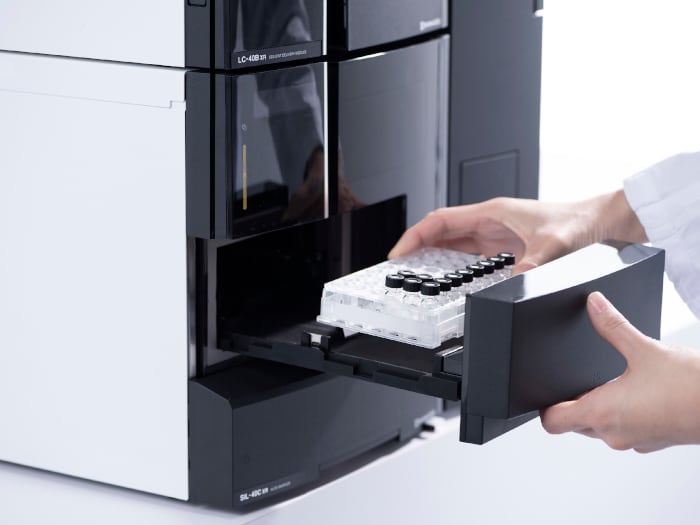
This product won the Good Design Award and the Red Dot Design Award in 2019.
Expressions of exhilaration by Shimadzu Corporation designers
The two designers responsible for these products are thrilled by their recognition!
This is the first time that Shimadzu Corporation has been recognized with JIDA Design Museum Selection. Both the public and JIDA members recommended our products, and that made us very happy.
Both products received high recognition for all processes of the design, from planning to UI. People acknowledged the value of Shimadzu Corporation’s production consistency, which ensures the high quality of finished products.
Given that both products received high marks for all aspects of the design, from product planning to the user interface design. The selections are a recognition of the overall high quality and consistency of Shimadzu’s manufacturing system.

Tomoya Sugie, in Charge of MobileDaRt Evolution MX8 Version Design

Hyeri Kang, in Charge of Nexera series Design
Processes for designing award-winning products
The designers answered questions about ideas and important points in the designing of individual products.
Sugie: The difficulty we faced in designing MobileDaRt Evolution MX8 Version was how to harmonize a number of mechanical elements. A medical diagnostic imaging device has numerous moving parts and lacks visual harmony if the joints and arms are not well designed. I paid great attention to designing each curve so that patients, technicians, and other hospital personnel would be satisfied with the device.
Sugie: I attached considerable importance to color development. A new set of colors were chosen to help subjects feel comfortable. This new colors was first used in The MobileDaRt Evolution MX8 Version system is the first product where the new colors were applied. Now these colors are basically being used all of our medical devices, including existing products and those under development.
■ Click here for details of the design strategy for MobileDaRt Evolution MX8 Version
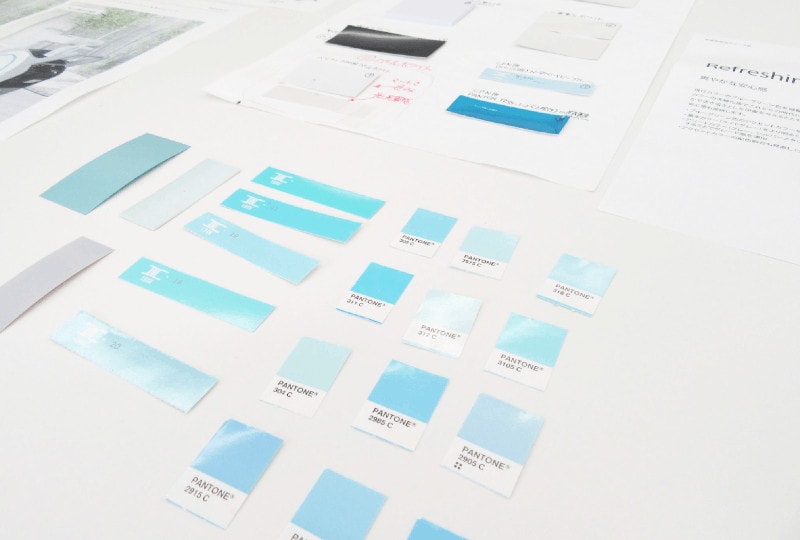
Light colors that impart a feeling of cleanliness
Kang: Nexera series comprises different sets of modules depending on the user. I had to pay attention to each module and the entire system. It was a privilege to play a part in designing the ultra-high-performance liquid chromatograph, one of Shimadzu Corporation’s main products, although I felt under some pressure.
kang: I tried to stop putting pressure on myself. Instead, I kept my presence of mind and did as I usually do for other projects. I knew that pressure would not produce good design. There were many difficulties during the development, however, several of my design ideas were accepted in the end. I didn’t develop the product on my own. It was the result of concerted efforts by a number of staff members. I am grateful to them.
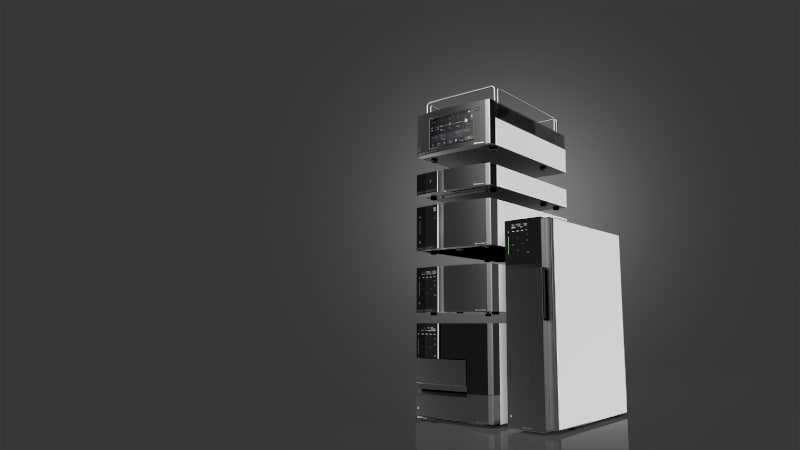
Ultra-high-performance liquid chromatograph comprising different modules depending on applications
Design of analytical and measuring instruments and medical diagnostic imaging systems
Our analytical and measuring instruments and medical diagnostic imaging systems can be used in a variety of environments and for different purposes. How do they differ in design?
Sugie: Unlike analytical devices, medical devices are characterized by “mobility,” “large size,” and “more than one user.” Many products are equipped with arms and wheels, which should be shaped so as not to cause interference by their movement and designed to make their immediate environment feel more secure.
Sugie: Regarding size, medical devices are often taller than a person. I think very carefully about what kind of design is least intimidating and more relaxing when the device is placed in front of a patient. A good design should meet the needs of multiple users, including technicians and the patients who are checked by such devices.
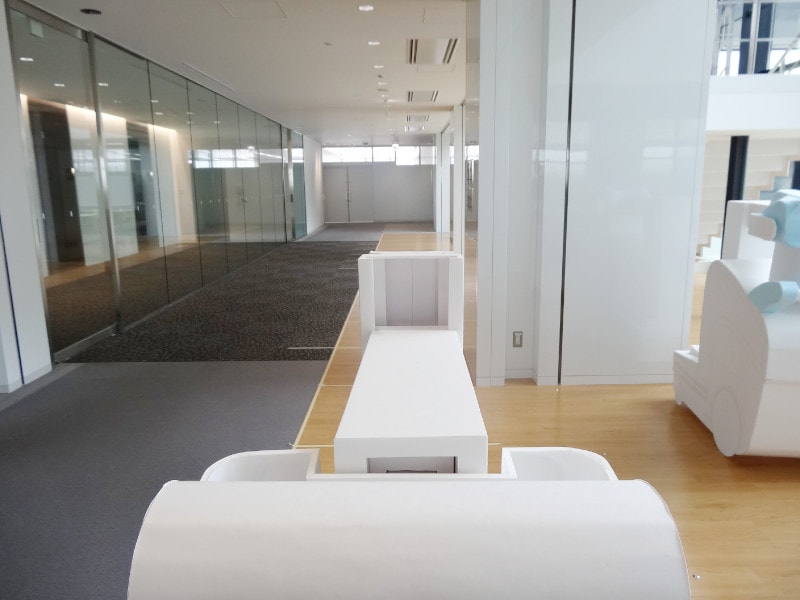
Checking the front view of a mock-up
kang: It is often said that users who purchase an analytical/measuring instrument do not place top priority on design. Many people think that the design aspect can be compromised. I might think that way if I were a user. However, a good design does not compromise the efficacy of a product. That is my starting point in developing a design. Even if the design element is not given top priority, good design surely pleases users. I approach the task from different angles: type of user, environment, purpose of use, and ease of maintenance.
kang: Some say that design is a matter of sensibility. Personally, I think that it is absolutely a matter of logic, that there is always a right answer. I am looking for that answer when I design analytical devices.
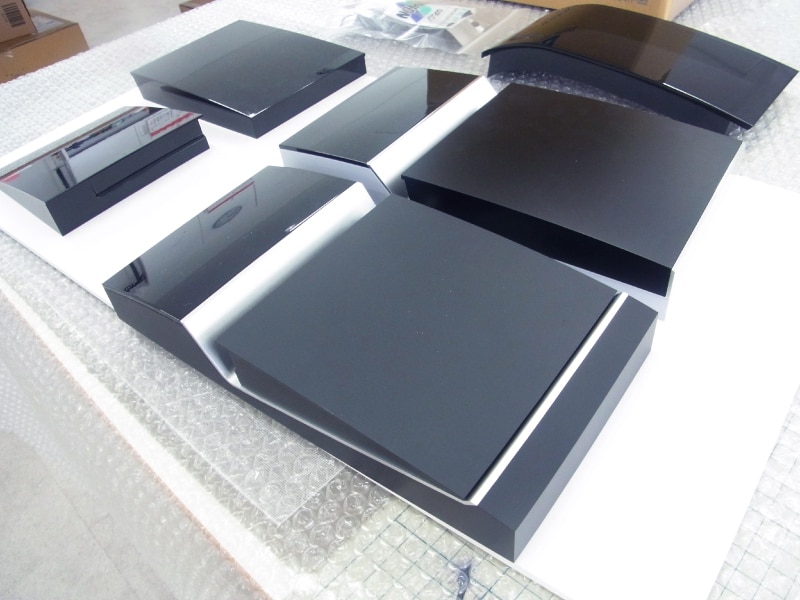
Design featuring a particular texture
Aspirations for future design projects
Not content with this selection and recognition, the designers are keen to expanding their fields of activity.
Sugie: Through my experience of designing medical devices, I have learned that the perspectives of different users play an important part in development. This experience should be applicable to other fields. Particularly in the field of healthcare, which is Shimadzu Corporation’s focus, use of such devices may not be limited to laboratories and hospitals. Wherever the devices are, whether in industrial machinery or aircraft equipment industry, there are also users. I hope our team plays a leadership role by working on design projects when the company is looking to enter a new business field.
kang: I will work constantly to expand the scope of design, or work across organizational boundaries and in different fields. On this occasion, I gained a lot of experience, not only in product design but also in sales promotion. I will also be actively engaged in the processes that take place before and after product design, in order to help create new value. My work should not cease when a design is released. Instead, I hope to track products in order to investigate how and where they are used, and to glean useful information for designing future products.
Shimadzu have numerous other products that have won design awards, both in Japan and overseas. Please take notice of design!
 Page Title and URL Copied.
Page Title and URL Copied.


